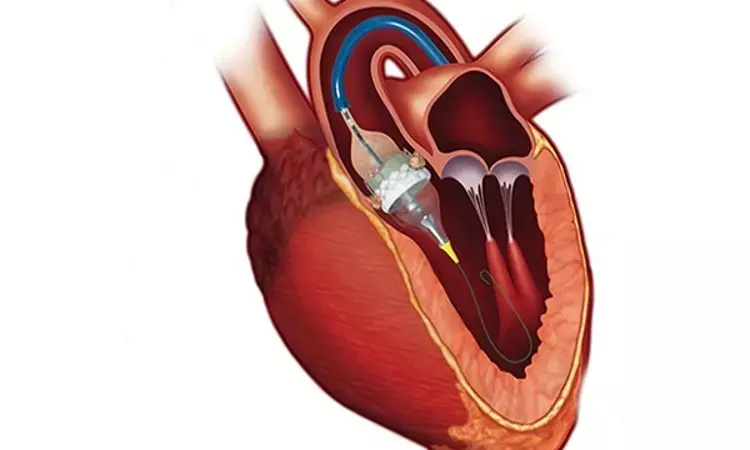- Home
- Medical news & Guidelines
- Anesthesiology
- Cardiology and CTVS
- Critical Care
- Dentistry
- Dermatology
- Diabetes and Endocrinology
- ENT
- Gastroenterology
- Medicine
- Nephrology
- Neurology
- Obstretics-Gynaecology
- Oncology
- Ophthalmology
- Orthopaedics
- Pediatrics-Neonatology
- Psychiatry
- Pulmonology
- Radiology
- Surgery
- Urology
- Laboratory Medicine
- Diet
- Nursing
- Paramedical
- Physiotherapy
- Health news
- Fact Check
- Bone Health Fact Check
- Brain Health Fact Check
- Cancer Related Fact Check
- Child Care Fact Check
- Dental and oral health fact check
- Diabetes and metabolic health fact check
- Diet and Nutrition Fact Check
- Eye and ENT Care Fact Check
- Fitness fact check
- Gut health fact check
- Heart health fact check
- Kidney health fact check
- Medical education fact check
- Men's health fact check
- Respiratory fact check
- Skin and hair care fact check
- Vaccine and Immunization fact check
- Women's health fact check
- AYUSH
- State News
- Andaman and Nicobar Islands
- Andhra Pradesh
- Arunachal Pradesh
- Assam
- Bihar
- Chandigarh
- Chattisgarh
- Dadra and Nagar Haveli
- Daman and Diu
- Delhi
- Goa
- Gujarat
- Haryana
- Himachal Pradesh
- Jammu & Kashmir
- Jharkhand
- Karnataka
- Kerala
- Ladakh
- Lakshadweep
- Madhya Pradesh
- Maharashtra
- Manipur
- Meghalaya
- Mizoram
- Nagaland
- Odisha
- Puducherry
- Punjab
- Rajasthan
- Sikkim
- Tamil Nadu
- Telangana
- Tripura
- Uttar Pradesh
- Uttrakhand
- West Bengal
- Medical Education
- Industry
Mortality, stroke rates similar at 5-years with TAVR versus SAVI: SURTAVI trial

Delhi: Patients at intermediate surgical risk who underwent transcatheter aortic valve replacement (TAVR) versus surgery had similar rates of mortality or stroke, according to five-year data from the SURTAVI trial. However, there were more reinterventions after TAVR initially, the rates were similar after two years and also key clinical endpoints were similar.
The findings from the Surgical Replacement and Transcatheter Aortic Valve Implantation (SURTAVI) Trial were presented at TCT 2021, the 33rd annual scientific symposium of the Cardiovascular Research Foundation (CRF).
Surgical Aortic Valve Replacement (SAVR) has been viewed as the norm of care in the past few decades, but recent years have seen a generous ascent in the minimally invasive transcatheter aortic valve replacement (TAVR) technology, even in low-risk surgical patients.
According to Nicolas M. Van Mieghem, professor of interventional cardiology, Thoraxcenter, Erasmus University Medical Center, Rotterdam, the Netherlands, longer-term outcomes data from the SURTAVI randomized trial comparing early-generation TAVR to open-heart surgery are similar and encouraging for TAVR in younger, healthier patients with aortic stenosis.
The study enrolled intermediate-risk patients across 87 centers in Canada, Europe, and the United States who underwent attempted implant of a transcatheter aortic valve (n=864) or a surgical valve (n=796). Categorization was made among these patients based on investigational sites and the need for revascularization. Concomitant or staged PCI in the TAVR arm or coronary bypass graft in the surgical arm was performed as indicated.
Following were the study's key findings:
- The primary endpoint, consisting of the composite of death or disabling stroke at five years, was similar in both groups with 31.3% for TAVR and 30.8% for surgery.
- All-cause mortality had similar rates and disabling stroke was 4.1% for TAVR compared to 5.8% for surgery.
- At two years, reinterventions were higher with TAVR (2.5% versus 0.5%). However, at years three through five, the rates were similar.
- At five years, the reintervention rate for TAVR was 1.0% compared to 1.3% compared with surgery.
- Core lab-assessed valve regurgitation showed that surgery patients had significantly less ≥ mild aortic regurgitation or paravalvular leak than TAVR at one, two, and five-year follow-ups.
- Kansas City Cardiomyopathy Questionnaire summary scores were higher for TAVR patients at one year. However, the scores were similar at each additional follow-up through five years. New York Heart Association Class was also similar between both groups at each follow-up. In addition, forward-flow hemodynamics were significantly better with TAVR.
To sum up, there were no differences in the 5-year outcomes in intermediate-risk patients with SAVR versus TAVR.
Dr Kamal Kant Kohli-MBBS, DTCD- a chest specialist with more than 30 years of practice and a flair for writing clinical articles, Dr Kamal Kant Kohli joined Medical Dialogues as a Chief Editor of Medical News. Besides writing articles, as an editor, he proofreads and verifies all the medical content published on Medical Dialogues including those coming from journals, studies,medical conferences,guidelines etc. Email: drkohli@medicaldialogues.in. Contact no. 011-43720751


